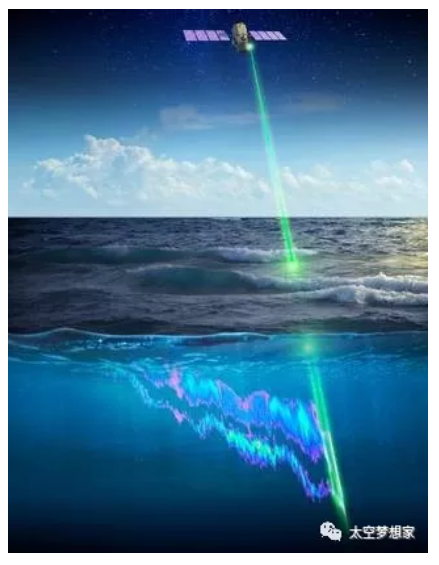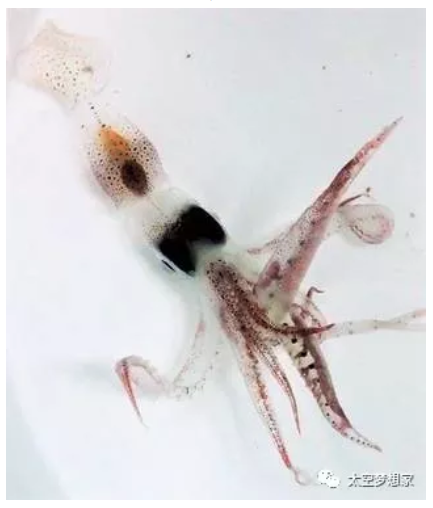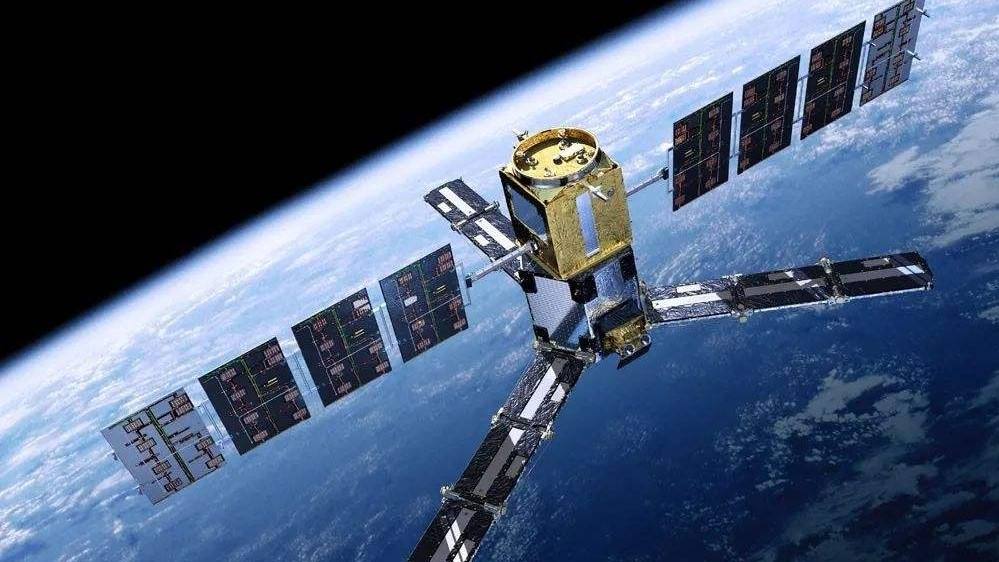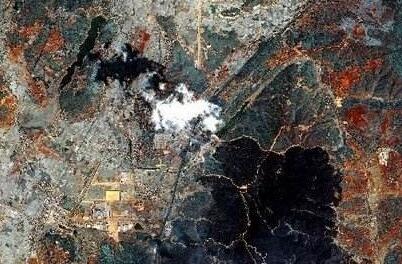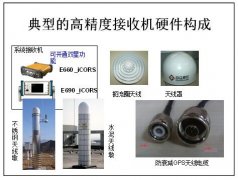研究人員利用基于太空的CALIPSO激光雷達測量了地球上最大的動物遷徙,這種動物遷徙發生在小型海洋生物夜間從深海游上來以浮游植物為食,然后在日出之前再次游回來。
每天晚上,在黑暗的掩護下,無數的小海洋生物——從魷魚到磷蝦——從海洋深處游到接近海面的地方覓食。這是地球上最大的動物遷徙,也是地球氣候系統的重要組成部分。由于太空激光的意外使用,這一現象首次在全球范圍內被觀察到。
研究人員利用2006年發射的云氣溶膠激光雷達和紅外探路者衛星觀測(CALIPSO)衛星觀察了這種垂直遷移模式。他們在周三的《自然》雜志上發表了他們的發現。
“這是一項最新的研究,它證明了一件令許多人吃驚的事情:lidars具有從太空提供科學上有用的海洋測量數據的敏感性。”位于弗吉尼亞州漢普頓的NASA蘭利研究中心(Langley Research Center)的科學家、該研究的合著者克里斯·霍斯特勒(Chris Hostetler)說,“我認為我們只是觸及了激光雷達可以實現的令人興奮的新海洋科學的表面。”
這項研究著眼于一種被稱為Diel垂直遷移(DVM)的現象,在這種現象中,小型海洋生物在夜間從深海游上來,以接近海面的浮游植物為食,然后在日出之前返回深海。科學家們認識到,在全世界范圍內,這種自然的每日遷徙是地球上動物遷徙總數最多的一次。
每日垂直遷移的生物對地球氣候的累積影響是顯著的。在白天,海洋浮游植物進行光合作用,并在此過程中吸收大量的二氧化碳,這有助于海洋吸收大氣中的溫室氣體。經歷DVM的動物游到海面上,以海洋表面附近的浮游植物為食,然后游回海面,帶走浮游植物的碳。這些碳中的大部分會被排入海洋深處,在那里它們被有效地困在海洋深處,阻止它們釋放回大氣。
像小烏賊、魚和磷蝦這樣的微小生物是海洋中大規模垂直遷移模式的一部分,目前已經在世界各地的太空中進行了測量。
“來自太空的激光雷達讓我們能夠每隔16天在全球范圍內對這些遷徙動物進行采樣,持續10年。”這項研究的負責人、俄勒岡州科瓦利斯俄勒岡州立大學(Oregon StateUniversity)的高級研究科學家和教授邁克·貝倫菲爾德(MikeBehrenfeld)說,“我們從未有過這樣的全球覆蓋范圍,讓我們得以觀察這些動物的行為、分布和數量。”
研究人員將注意力集中在熱帶和亞熱帶海洋區域,他們發現,雖然在低營養和清澈的水域中,垂直遷移的動物較少,但它們在這些地區的動物總數中所占的比例更大。這是因為,當視覺捕食者在清澈的海洋區域擁有最大優勢的時候,這種遷徙行為主要是為了躲避視覺捕食者而進化出來的。
在較陰暗和營養豐富的地區,經歷DMV的動物數量較多,但它們在動物總數中所占的比例較小,因為視覺捕食者處于劣勢。在這些地區,許多動物日夜都呆在水面附近。
研究人員還觀察了遷徙動物種群的長期變化,這可能是由氣候變化引起的。在研究期間(2008年至2017年),CALIPSO的數據顯示,在北太平洋和南太平洋、北大西洋和南印度洋的亞熱帶水域,遷徙動物的生物量有所增加。在熱帶地區和北大西洋,生物量減少。除了熱帶大西洋區域外,所有這些變化都與浮游植物產量的變化相關。
動物介導的碳傳送帶被認為是地球碳循環的重要機制。科學家們正在把經歷DVM的動物作為氣候模型的關鍵元素。
貝倫菲爾德說:“這些建模者還沒有一個全球性的數據集來校準這些模型,告訴他們這些遷移者在哪里最重要,在哪里最豐富,以及隨著時間的推移它們是如何變化的。”“新的衛星數據讓我們有機會將衛星觀測與模型結合起來,更好地量化這種巨大的動物遷徙對地球碳循環的影響。”
衛星數據也與全球漁業有關,因為遷徙的動物是潛伏在海洋深處的大型捕食者的重要食物來源。這些捕食者通常是對商業漁業有吸引力的魚類品種。DVM信號越大,深海魚類的數量就越多。
雖然CALIPSO的激光是用來測量云層和大氣氣溶膠的,但它可以穿透海洋表層20米以上的區域。如果遷徙的動物到達這一層,它們就會被CALIPSO探測到。
NASA利用太空的優勢來了解和探索我們的家園,改善我們的生活,保護我們的未來。該機構對地球復雜自然環境的觀測對了解我們星球的自然資源和氣候現在以及將來如何變化至關重要。
原文:
NASA, French Space Laser Measures Massive Migration of Ocean Animals
Researchers used the space-based CALIPSO lidar to measure the planet’slargest animal migration, which takes place when small sea creatures swim upfrom the depths at night to feed on phytoplankton, then back down again justbefore sunrise.
Credits: NASA/Timothy Marvel
Tiny creatures such as small squid, fish and krill are part of the massivevertical migration pattern in the ocean that has now been measured around theworld from space.
Credits: Chandler Countryman
Every night, under the cover of darkness, countless small sea creatures –from squid to krill – swim from the ocean depths to near the surface to feed.This vast animal migration – the largest on the planet and a critical part ofEarth’s climate system – has been observed globally for the first time thanksto an unexpected use of a space-based laser.
Researchers observed this vertical migration pattern using theCloud-Aerosol Lidar and Infrared Pathfinder Satellite Observations (CALIPSO)satellite -- a joint venture between NASA and the French space agency, CentreNational d'Etudes Spatiales -- that launched in 2006. They published theirfindings in the journal Nature Wednesday.
“This is the latest study to demonstrate something that came as a surpriseto many: that lidars have the sensitivity to provide scientifically usefulocean measurements from space,” said Chris Hostetler, a scientist at NASA'sLangley Research Center in Hampton, Virginia, and co-author on the study."I think we are just scratching the surface of exciting new ocean sciencethat can be accomplished with lidar.”
The study looks at a phenomenon known as Diel Vertical Migration (DVM), inwhich small sea creatures swim up from the deep ocean at night to feed onphytoplankton near the surface, then return to the depths just before sunrise.Scientists recognize this natural daily movement around the world as thelargest migration of animals on Earth in terms of total number.
The cumulative effect of daily vertically migrating creatures on Earth'sclimate is significant. During the day, ocean phytoplankton photosynthesizeand, in the process, absorb significant amounts of carbon dioxide, whichcontributes to the ocean's ability to absorb the greenhouse gas from theatmosphere. Animals that undergo DVM come up to the surface to feed onphytoplankton near the ocean’s surface and then swim back down, taking thephytoplankton carbon with them. Much of this carbon is then defecated at depthswhere it is effectively trapped deep in the ocean, preventing its release backinto the atmosphere.
"What the lidar from space allowed us to do is sample these migratinganimals on a global scale every 16 days for 10 years," said MikeBehrenfeld, the lead for the study and a senior research scientist andprofessor at Oregon State University in Corvallis, Oregon. "We've neverhad anywhere near that kind of global coverage to allow us to look at thebehavior, distribution and abundance of these animals."
Zeroing in on tropical and subtropical ocean regions, researchers foundthat while there are fewer vertically migrating animals in lower-nutrient andclearer waters, they comprise a greater fraction of the total animal populationin these regions. This is because the migration is a behavior that has evolvedprimarily to avoid visual predators during the day when visual predators havetheir greatest advantage in clear ocean regions.
In murkier and more nutrient-rich regions, the abundance of animals thatundergo DMV is higher, but they represent a smaller fraction of the totalanimal population because visual predators are at a disadvantage. In theseregions, many animals just stay near the surface both day and night.
The researchers also observed long-term changes in populations ofmigrating animals, likely driven by climate variations. During the study period(2008 to 2017), CALIPSO data revealed an increase in migrating animal biomassin the subtropical waters of the North and South Pacific, North Atlantic andSouth Indian oceans. In the tropical regions and North Atlantic, biomassdecreased. In all but the tropical Atlantic regions, these changes correlatedwith changes in phytoplankton production.
This animal-mediated carbon conveyor belt is recognized as an importantmechanism in Earth’s carbon cycle. Scientists are adding animals that undergoDVM as a key element in climate models.
"What these modelers haven't had is a global dataset to calibratethese models with, to tell them where these migrators are most important, wherethey're most abundant, and how they change over time," said Behrenfeld."The new satellite data give us an opportunity to combine satelliteobservations with the models and do a better job quantifying the impact of thisenormous animal migration on Earth’s carbon cycle."
The satellite data are also relevant to global fisheries because themigrating animals are an important food source for larger predators that lurkin the depths of the ocean. Those predators are often species of fish that areattractive to commercial fisheries. The larger the DVM signal, the larger thepopulation of fish that can live in the deep sea.
Though CALIPSO's laser was designed to measure clouds and atmosphericaerosols, it can penetrate the upper 20 meters of the ocean's surface layer. Ifthe migrating animals reach this layer, they are detected by CALIPSO.
NASA uses the vantage point of space to understand and explore our homeplanet, improve lives and safeguard our future. The agency’s observations ofEarth’s complex natural environment are critical to understanding how ourplanet’s natural resources and climate are changing now and could change in thefuture.
原文鏈接:https://www.nasa.gov/press-release/nasa-french-space-laser-measures-massive-migration-of-ocean-animals
注:所有圖片來在NASA
